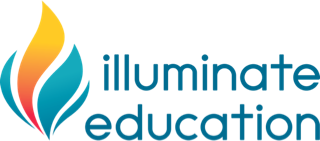Closing the Gap on COVID-Slide Learning Loss
Focusing on core instruction, intervention, and progress monitoring will help students recover lost instruction time due to COVID-19.

Using cohort data from the previous school year, researchers at Illuminate Education used scores from three FastBridge K-5 assessment programs to estimate typical learning losses from spring to fall 2020 as a result of COVID-19. They grounded their calculations of learning loss in previous research into the “summer slide,” and determined that higher numbers of students will need remedial reading and math instruction to achieve grade-level learning goals during the upcoming school year.
Researchers estimate learning loss in reading and math is going to be greatest in grades K–3, and that teachers should concentrate on these core subjects to make up for the disruptions in instruction during the spring. New research has a particular emphasis on K–2. They also recommend that the key metric to focus on when monitoring progress is the Rate of Improvement (ROI) rather than norm-based benchmarks. This will be a critical metric to use in identifying students who will need more intensive intervention.
The research study tracked performance of student cohorts from the fall of 2018 through the fall of 2019 using both adaptive reading and math assessments as well as a measure of oral reading fluency. The team was also able to examine the effect of prior growth on summer learning loss. This allowed them to estimate total learning loss based on COVID school closures.
What Do the Data Tell Us?
- Schools can expect to see significant losses in overall reading and math achievement, and higher percentages of students at moderate to high risk of significant academic difficulties when school begins.
- Learning loss in reading is seen across all grades, but is most pronounced in Kindergarten.
- Oral reading fluency loss impacts all grades, but is most pronounced in Grade 5.
- Math learning loss is observed at higher rates at all grade levels K-5.
Students who participated in frequent virtual interactions with their teachers, especially 1:1 video conferencing will likely have smaller learning losses than students who did not. Findings suggest that the students who most benefit from daily, systematic instruction when schools are open will be the ones most likely to experience learning loss when regular lessons are not available.
Researchers continue to analyze the data as students begin the year and will present additional research results later in the fall.
Recommendations to Close the Gap
Most school districts are beginning the school year with 100% remote learning; others with a hybrid rotation model. Very few are starting the year with students on campus full time. Compared to the scramble in the spring to quickly pivot to remote learning, educators are more prepared to begin the year with remote direct instruction. Here are some recommendations to consider to close the learning gap:
- Student support models such as MTSS are one way to be ready to address students’ learning needs, but not sufficient by itself.
- Fall screenings are needed to identify the largest learning gaps and address through Tier 1 instruction. As researchers have noted, Tier 1 core instruction is the most effective way to improve all students’ learning outcomes.
- Focus on core instruction with school-wide social-emotional behavior (SEB) supports so that students are mentally and emotionally ready to resume learning.
- Rate of Improvement (ROI) is the key metric to focus on when conducting progress monitoring this school year because many students will start the year significantly behind the norms.
- Frontload intervention and progress monitoring as soon as possible.
- In K-3 classrooms, spend more time focused on reading and math. The risk of loss is greater in these grades.
The FastBridge assessment system can help build an MTSS framework grounded in solid Tier 1 core instruction to help all students recover lost learning. FastBridge is the only assessment system to combine Computer-Adaptive Tests (CAT) and Curriculum-Based Measures (CBM) for screening and progress monitoring across reading, math and social-emotional behavior (SEB) to better understand and support the needs of the whole child. Reports connect data to evidence-based recommendations for instruction. There is also professional development and training to build teachers’ capacity to implement assessments and instructional supports effectively. The FastBridge back-to-school roadmap suggests tutorials for how to use assessments remotely.
Read the whitepaper
Tools and ideas to transform education. Sign up below.
